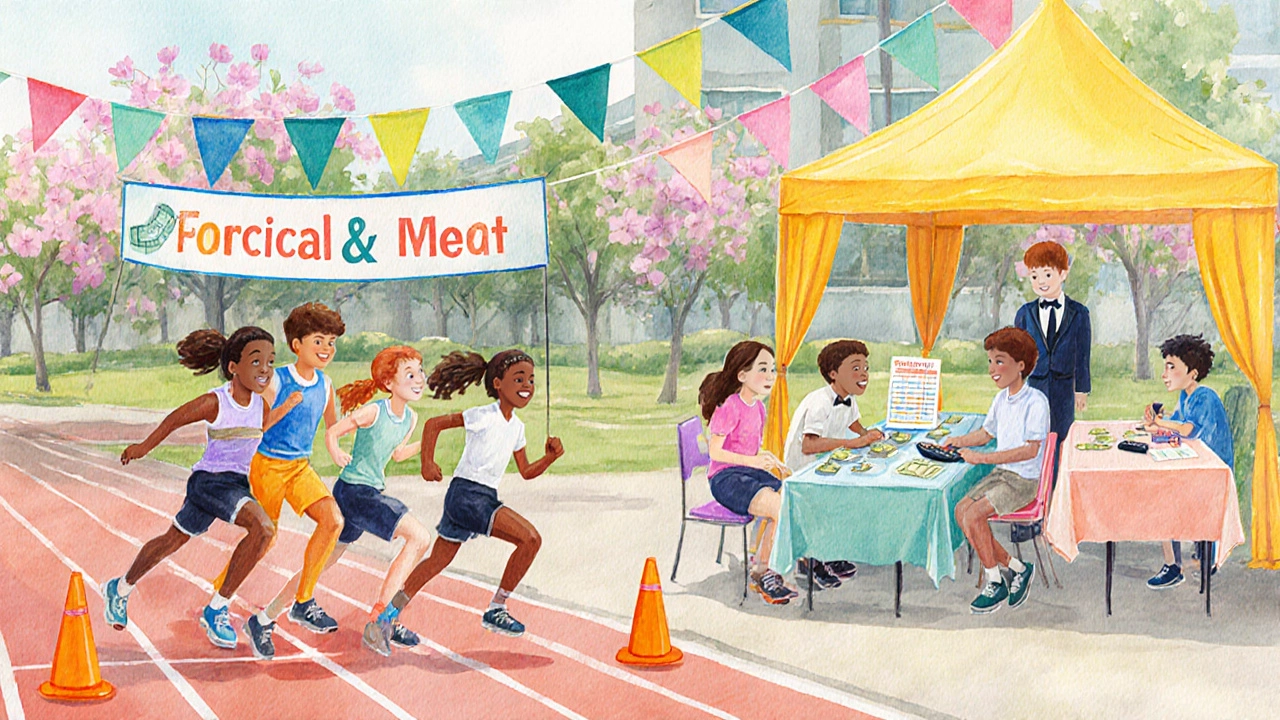Learn the nine essential centers of youth development, real-world examples, and practical steps to integrate them into any program.

- Created by: Lydia Carmichael
- Completed on: 11 Oct 2025
- Categories: Youth Programs
Youth Development Center Balance Checker
Assess Your Program Coverage
Physical
Health, fitness, and body awareness
Emotional
Self-awareness, regulation, resilience
Social
Collaboration, empathy, conflict resolution
Cognitive
Critical thinking, problem-solving, academic support
Spiritual
Purpose, values, meaning
Character
Integrity, responsibility, perseverance
Cultural
Heritage appreciation, artistic expression
Economic
Financial literacy, career readiness
Civic
Active citizenship, leadership
Ever wonder why some youth programs seem to click while others fall flat? The secret often lies in a solid framework that covers every angle of a young person's growth. The youth development field boils that down to nine specific centers-each one a pillar that, when nurtured, helps teens become well‑rounded adults. Below you’ll get a plain‑English walkthrough of all nine, real‑world ways to weave them into your work, and quick fixes for common hiccups.
Key Takeaways
- The 9 centers address physical, emotional, social, cognitive, spiritual, character, cultural, economic, and civic growth.
- Each center has concrete activities you can adopt without overhauling your whole program.
- Balancing all nine prevents gaps that often lead to disengagement or dropout.
- Measuring progress in each area helps you prove impact to funders and families.
- Common pitfalls include over‑emphasizing one center and ignoring the teen’s voice.
What Are the 9 Centers of Youth Development?
Think of the nine centers as a set of lenses you can switch between when designing a session, a workshop, or an entire program. Below is a brief definition of each, followed by examples you can copy‑paste into your next planning meeting.
Physical Center focuses on health, fitness, and body awareness. Activities range from organized sports to nutrition workshops and teach teens how to care for their bodies.
Emotional Center helps young people recognize, label, and regulate feelings. This includes mindfulness exercises, counseling circles, and journaling prompts that build emotional intelligence.
Social Center develops relationship skills, teamwork, and peer support. Group projects, conflict‑resolution role‑plays, and mentorship pairings are classic tools.
Cognitive Center targets critical thinking, problem‑solving, and academic readiness. Workshops on study strategies, coding bootcamps, or debate clubs fit here.
Spiritual Center offers space for exploring purpose, values, and meaning. This doesn’t have to be religious; it can be a values‑clarification retreat or a nature‑immersion day.
Character Center cultivates traits like integrity, responsibility, and perseverance. Service‑learning, honour‑codes, and goal‑setting worksheets are common practices.
Cultural Center celebrates heritage, diversity, and artistic expression. Activities might include multicultural festivals, storytelling circles, or creative‑arts labs.
Economic Center prepares teens for financial independence and workforce readiness. Budget‑making games, entrepreneurship challenges, and job‑shadowing placements are effective.
Civic Center encourages active citizenship, community engagement, and leadership. Vote‑simulation workshops, local‑issue panels, and volunteer drives bring this to life.

Quick Reference Table
| Center | Core Goal | Sample Activity |
|---|---|---|
| Physical | Healthy body, stamina, nutrition awareness | Weekly soccer league + cooking demo |
| Emotional | Self‑awareness, regulation, resilience | Guided mindfulness + feelings journal |
| Social | Collaboration, empathy, conflict resolution | Team‑building escape‑room challenge |
| Cognitive | Critical thinking, problem‑solving, academic support | Hackathon or debate club |
| Spiritual | Purpose, values, meaning | Values‑clarification retreat in nature |
| Character | Integrity, responsibility, perseverance | Community‑service project with reflection |
| Cultural | Heritage appreciation, artistic expression | Multicultural art exhibition |
| Economic | Financial literacy, career readiness | Mini‑business plan competition |
| Civic | Active citizenship, leadership | Local council meeting simulation |
Applying the Centers in Your Program
Knowing the theory is one thing; turning it into practice is another. Below is a step‑by‑step guide that works for school clubs, community nonprofits, or after‑school hubs.
- Audit your current activities. List everything you already do and tag each item with one or more of the nine centers. This visual map shows where you’re strong and where you’re thin.
- Set balanced objectives. For a six‑month cycle, pick at least one measurable goal per center - e.g., “Increase weekly physical activity minutes by 20%” or “Launch a teen‑run micro‑business”.
- Design blended sessions. Instead of a separate “sports day” and “career workshop”, create a “Health‑and‑Wealth Fair” where students try a fitness challenge followed by a budgeting game.
- Empower youth voice. Form a steering committee where teens vote on which centers need extra focus each quarter. When they own the agenda, engagement spikes.
- Track progress with simple rubrics. Use a one‑page scorecard that rates each participant on the nine centers (e.g., 1‑5). Review quarterly and celebrate growth, not just outcomes.
- Iterate. Use the scorecard data to shift resources-maybe the Cultural Center needs a guest artist, or the Economic Center could benefit from a partnership with a local bank.
Common Pitfalls and How to Dodge Them
Even well‑meaning programs stumble. Here are the top three traps and a quick fix for each.
- Over‑loading one center. If you cram all activities into the Physical Center, teens may feel burned out. Fix: Run a quarterly balance check using the audit table above.
- Neglecting teen input. Adults often assume they know what teens need. Fix: Hold a short “voice‑of‑youth” survey after each major event and act on the top three suggestions.
- Missing data. Without evidence, funders ask tough questions. Fix: Keep the scorecard simple, update it monthly, and generate a one‑page impact snapshot for reports.

Real‑World Example: Wellington Youth Hub
In Wellington, a community centre applied the nine‑center model to revamp its after‑school program. They started with a blunt audit and discovered that while sports and academic tutoring were strong, the Civic and Spiritual centers were almost non‑existent.
By introducing a monthly “Community Voices” forum (Civic) and a quarterly “Values Walk” in the Botanic Gardens (Spiritual), participation jumped 35% within three months. Their post‑program scorecard showed a rise from an average of 2.1 to 3.6 across all centers, convincing the city council to increase funding by 20%.
Next Steps for Program Leaders
If you’re ready to embed the nine centers into your work, grab a sheet of paper and run through this quick checklist.
- Do you have a current activity list? Yes → move on.
- Have you tagged each activity with at least one center? No → tag now.
- Are any centers missing from your roster? Yes → brainstorm one new activity for each gap.
- Do you have a simple rubric to measure teen growth? No → create a one‑page 9‑column scorecard.
- Is teen feedback built into your planning cycle? No → schedule a quarterly teen focus group.
Tick the boxes, adjust your plan, and watch the holistic development of your youth participants blossom.
Frequently Asked Questions
What age range does the 9‑center model work for?
The framework is flexible enough for early adolescents (10‑13) up to emerging adults (18‑24). You simply tailor activity complexity and depth to match developmental stages.
Do I need to cover all nine centers every week?
No. Consistency matters more than frequency. A balanced schedule might rotate emphasis-physical and social this week, cognitive and economic the next-while still keeping a thread of each center throughout the program.
How can I measure progress without costly assessments?
Use a simple self‑rating rubric. Ask teens to score themselves 1‑5 on each center after a major activity. Combine self‑ratings with facilitator observations for a quick, low‑cost picture of growth.
Can the model be used in virtual or hybrid programs?
Absolutely. For the Economic Center, run an online budgeting game; for the Cultural Center, host a virtual art gallery. The key is to keep the core intent of each center, regardless of delivery mode.
What’s a good first step for a program that’s already busy?
Start with a 30‑minute audit. List current activities and assign them to one or more centers. You’ll instantly see gaps and can add micro‑activities-like a five‑minute gratitude circle for the Emotional Center-without overhauling the whole schedule.